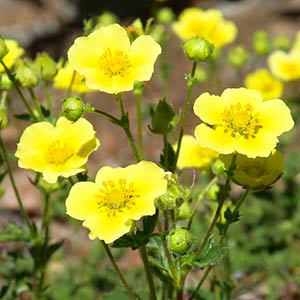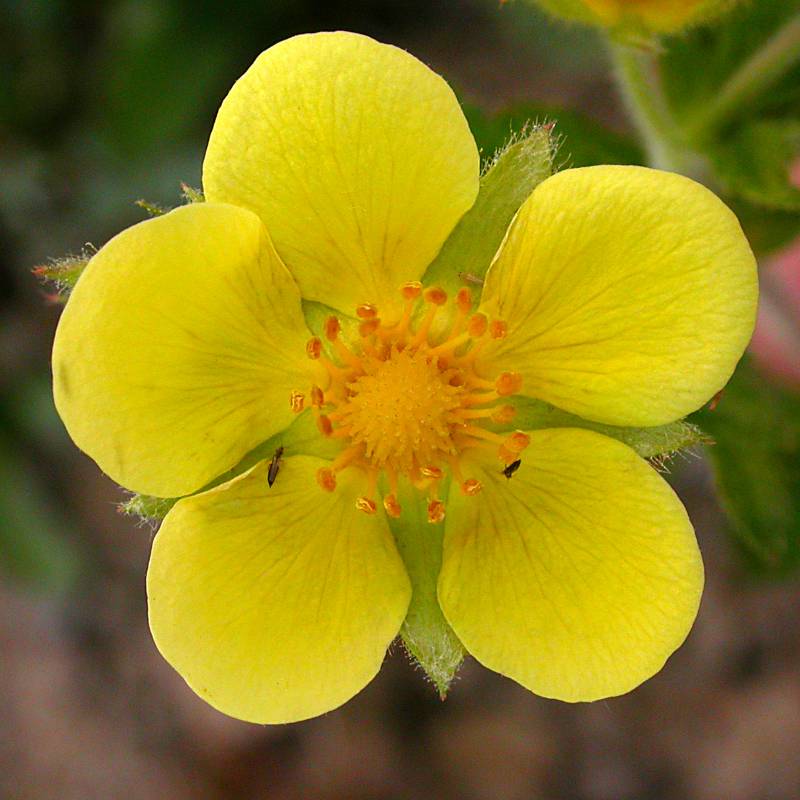Drymocallis pseudorupestris
Drymocallis glandulosa
sticky cinquefoil
Leaves alternate, pinnate;
leaflets 5-9, glandular-pubescent, oblong-obovate, the terminal leaflet wedge-shaped;
cauline leaves few, reduced upward.
Inflorescence cymose, few-flowered, diffuse, leafy bracteate;
calyx rotate, 5-parted, the segments alternating with bracteoles, 4-8 mm. long;
petals yellow, broadly ovate, about equal to the sepals, ascending;
stamens usually 25;
pistils numerous;
style thickened above the base and tapered to each end, exceeding the ovary to which it is attached well below the middle.
Achenes about 1 mm. long.
Drymocallis pseudorupestris
Drymocallis glandulosa
Occurring chiefly east of the Cascades crest in Washington; southern British Columbia to California, east to Alberta, Idaho, Montana, and Wyoming.
Widely distributed on both sides of the Cascades crest in Washington; British Columbia to California, east to Montana, Idaho, Utah, and Arizona.
- Local floras:
BC,
CA,
OR
- Local Web sites:
CalFlora,
CalPhotos,
Flora NW,
PNW Herbaria
WildflowerSearch
iNaturalist (observations)
USDA Plants Database
- LBJ Wildflower Center
- SEINet
- Plants of the World Online
- Encyclopedia of Life
- Wikipedia
- Google Image Search
- Local floras:
BC,
CA,
OR,
WA
- Local Web sites:
CalFlora,
CalPhotos,
Flora NW,
PNW Herbaria
WildflowerSearch
iNaturalist (observations)
USDA Plants Database
- LBJ Wildflower Center
- SEINet
- Plants of the World Online
- Encyclopedia of Life
- Wikipedia
- Google Image Search



